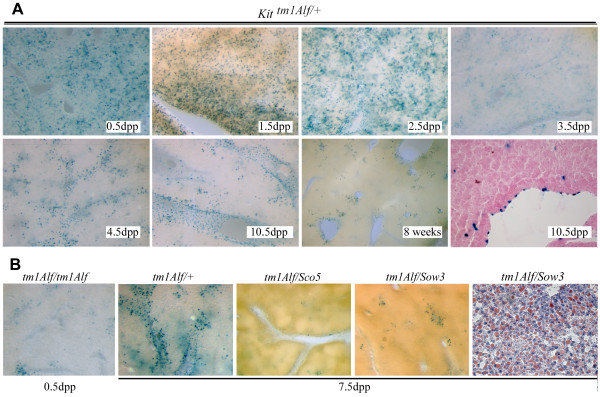Figure 5.
Hepatic expression of Kit correlates with liver phenotype observed in several mutants during the post-natal development and in adult mice. (A) Kit expression was detected in the liver of Kittm1Alf/+ mice by β-galactosidase activity on vibratome sections (40×) from 0.5 to 10.5 dpp, in adult, and on an eosin-stained sections (last panel). From birth to 2.5 dpp, β-galactosidase staining is found in a large number of hepatic cells, a reminiscence of the haematopoietic liver activity that takes place during late stage of embryonic development and ends after birth. As a consequence, the number of dispersed positive cells is reduced at 3.5 dpp. However, Kit expressing cells are clearly observed in the liver from 4.5 dpp to later stages and in adults. In Kittm1Alf/tm1Alf moribund newborns at 0.5 dpp, β-galactosidase staining is weaker due to the defect in hematopoiesis during fetal development but still remained in few cells. (B) At 7.5 dpp lacZ expression is detected in Kittm1Alf/+ liver whereas no expression is observed in transheterozygous Kittm1Alf/Sco5 and Kittm1Alf/Sow3 liver. Such compound heterozygotes suffer from a strong lipid steatosis as shown here for Kittm1Alf/Sow3 liver stained with oil-red-O (last panel). A similar staining was detected in Kittm1Alf/Sco5 liver (not shown).

